The Race Towards an All-in-one Productivity Tool
Most popular tools in the productivity space are competing for a single goal: to cover more use cases and become The One bundled solution for most company processes. The ‘all-in-one productivity tool’ idea was fresh 5 years ago, now everybody is doing it.
Productivity is a very generic term, so we will try to stay at a high level and skip specialized tools for very narrow niches.
How do people start doing something?
There aren’t many starting points. In fact, I’d say there are just five (tools are in brackets):
-
Notes/docs (Paper, Apple Notes, Notion, Google Docs)
-
Spreadsheets/databases (Airtable, Google Sheets)
-
Whiteboards (Paper & Whiteboard, Miro)
-
Tasks (Post-it Notes, ClickUp, Monday, Jira)
-
Chats (In person, Slack)
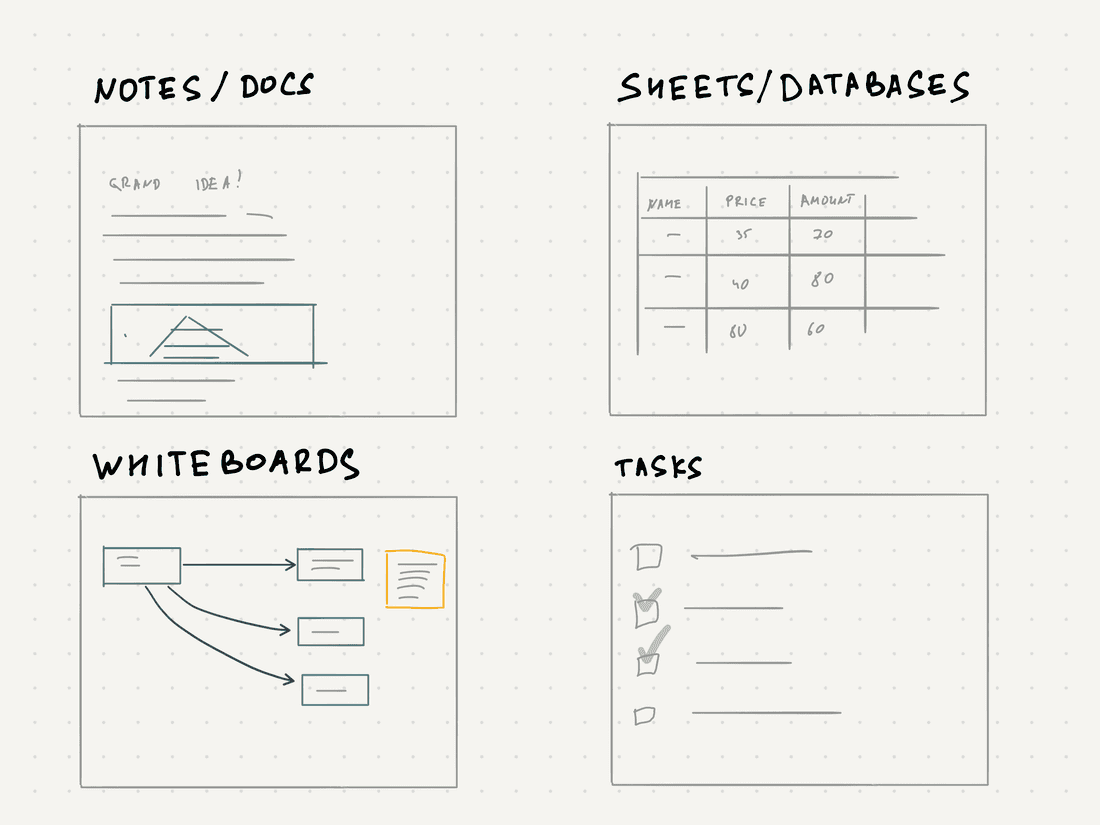
Indeed, we may start something as a simple note or a document, nail ideas in a spreadsheet, draw something on a whiteboard, or add a few tasks to a to-do list. Maybe there are other ways, but they are less popular.
These are all starting points in any workflow, and all the tools mentioned above became popular because they had a very good solution for a single workflow.
Now, many tools want to cover more workflow starting points and merge them into a single, all-in-one dream tool. Here are just some examples of how tools have expanded lately:
- ClickUp added documents, whiteboards and chats.
- Miro added documents and databases.
- Jira added whiteboards and strong Confluence integration.
- Monday added whiteboards and documents.
- Slack added lists and canvases.
Notion and Airtable are somewhat exceptional here. Notion is not rushing to add whiteboards or greatly improve databases, but I bet it will come in the near future. Airtable mostly moved into the no-code/low-code camp and competes with solution builders (like Retool) more.
Notes, Chats, Databases, Whiteboards, and… Tasks?
It’s hard to imagine that you can start an idea without Notes, Chats, Databases, and Whiteboards. But what about Tasks? Do we need them?
I think Tasks as a starting point is a dead-end. Conceptually, Tasks are just Database records, so Task lists have to evolve to become proper Databases. This is exactly what is happening with ClickUp and Monday: they’re adding more and more features to cover database-specific use cases, like formulas, relations, etc. However, the base architecture was created around Tasks, and all these features are just attempts to build something on top of a very shaky foundation. They will have to completely rewrite the core to truly support databases, and this is an enormously challenging task to start and complete. I personally don’t believe they will ever do it, so in the long run, I don’t think Monday or ClickUp will win the race.
Another question: which starting point is more fundamental?
It depends. Some people can’t live without docs, some can’t live without whiteboards, but no organization can live without databases. I believe that ontological hierarchies and networks are the most important things, thus databases are fundamental.
Hierarchies and Networks
Networks are extremely important in our world. When you get what networks are and how they work, you can unlock incredible power in almost any area of humanity: business, personal success, science, politics, ecosystems, etc. However, due to its high complexity, getting the gist of networks is quite hard.
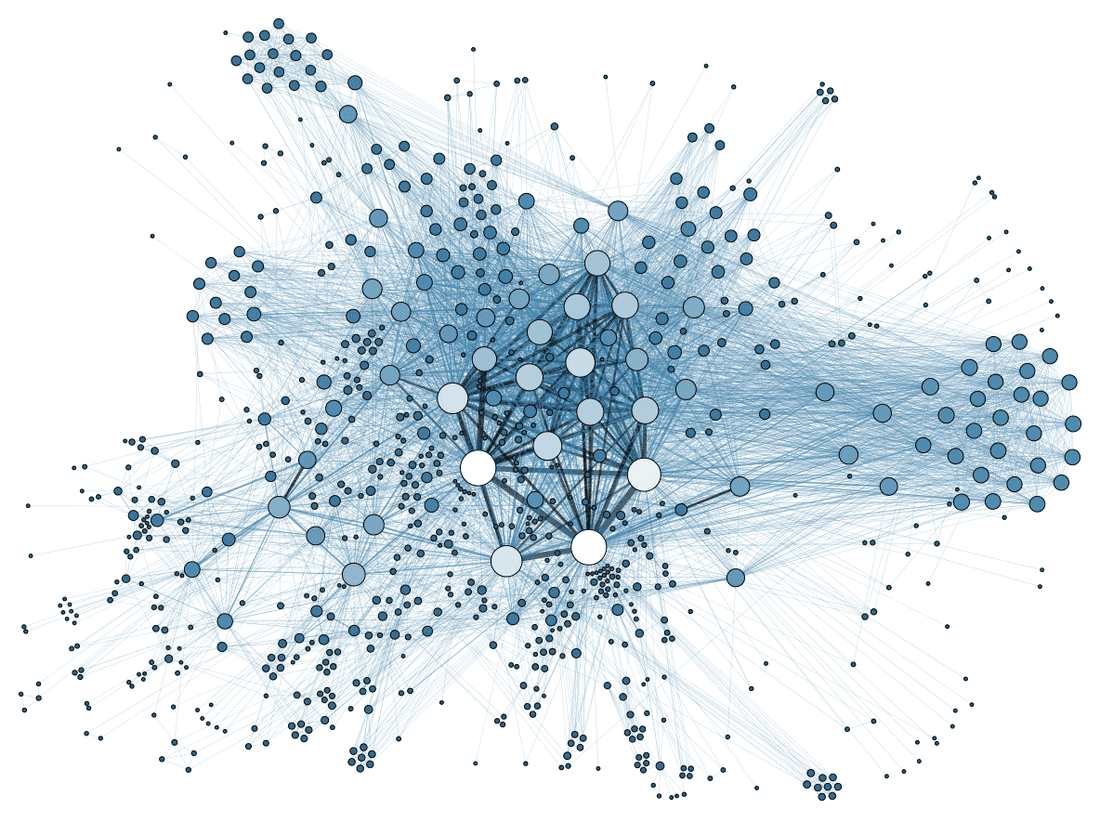
A tool that you use to think and organize personal or company-level information should at least support networks and allow to build networks and hierarchies (hierarchy is just a narrow case of a network).
Any network consists of Nodes and Connections.
In a productivity context, a Node is some piece of knowledge or information, and a Connection is a bi-directional link between information pieces. We have some flexibility to operate on different abstraction levels with Nodes. For example:
- Low-level Node: Paragraph, Image, Video, Comment
- High-level Node: Database Entity (Task, Idea, Feature), Document, Whiteboard
In general, you may want to add connections between nodes at the same or different levels, like:
- Link some Paragraph in Feedback Item to Feature
- Link Task to Feature
- Link Task to Whiteboard
- Link Image to Paragraph
Some cases may be less interesting, but the expressive power should be there.
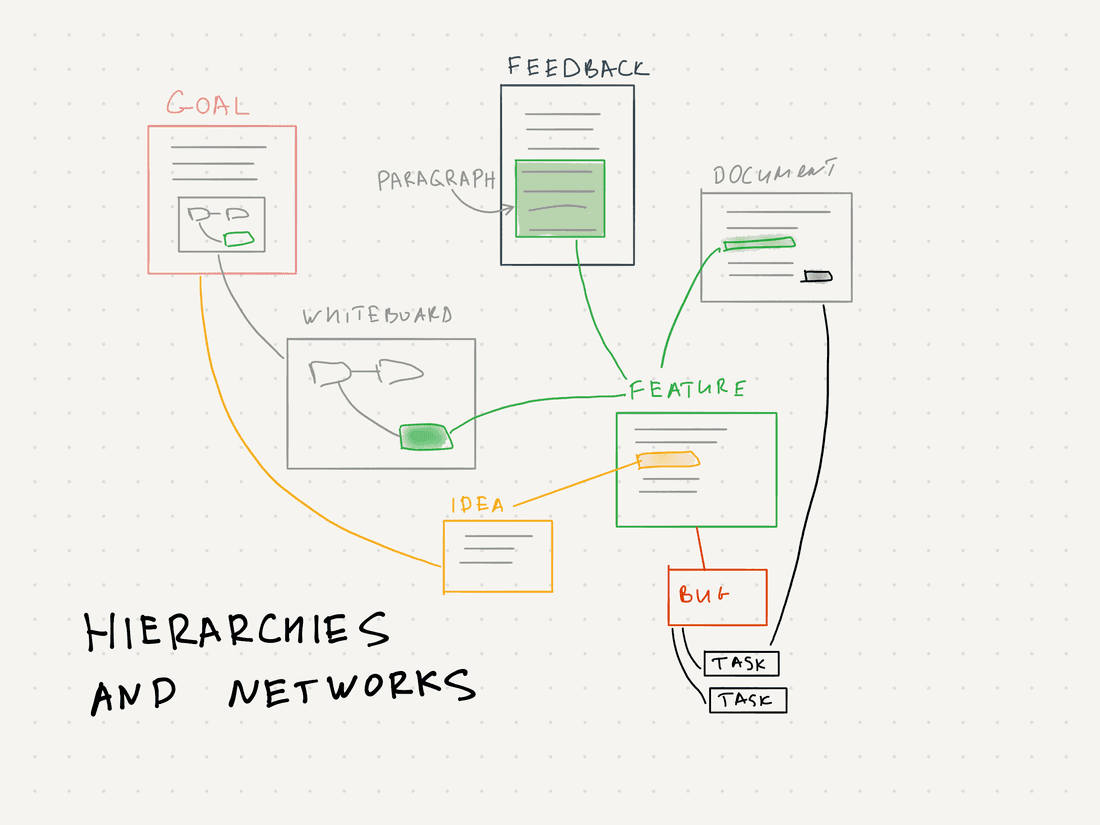
Networks are the essence of a collaborative knowledge management tool.
- When you think, you mix and connect information in your document, whiteboard or database item (for example, in a feature).
- When you connect information, you create networks and enable discovery.
- When everything is discoverable, you can spark new ideas via unexpected connections or at least keep the current context.
Your organization can’t survive without networks, and you need a tool to build and explore networks that can mimic your organizational design.
You also need hierarchies to build stable islands in networking chaos. And in some cases, you need really deep hierarchies, like Department → Team → Initiative → Feature → Task.
Let’s say you can create a deep hierarchy in a tool, but this is not enough. You should be able to visualize it via views and see all levels, configure access via relations, create formulas to calculate things, integrate it into the network.
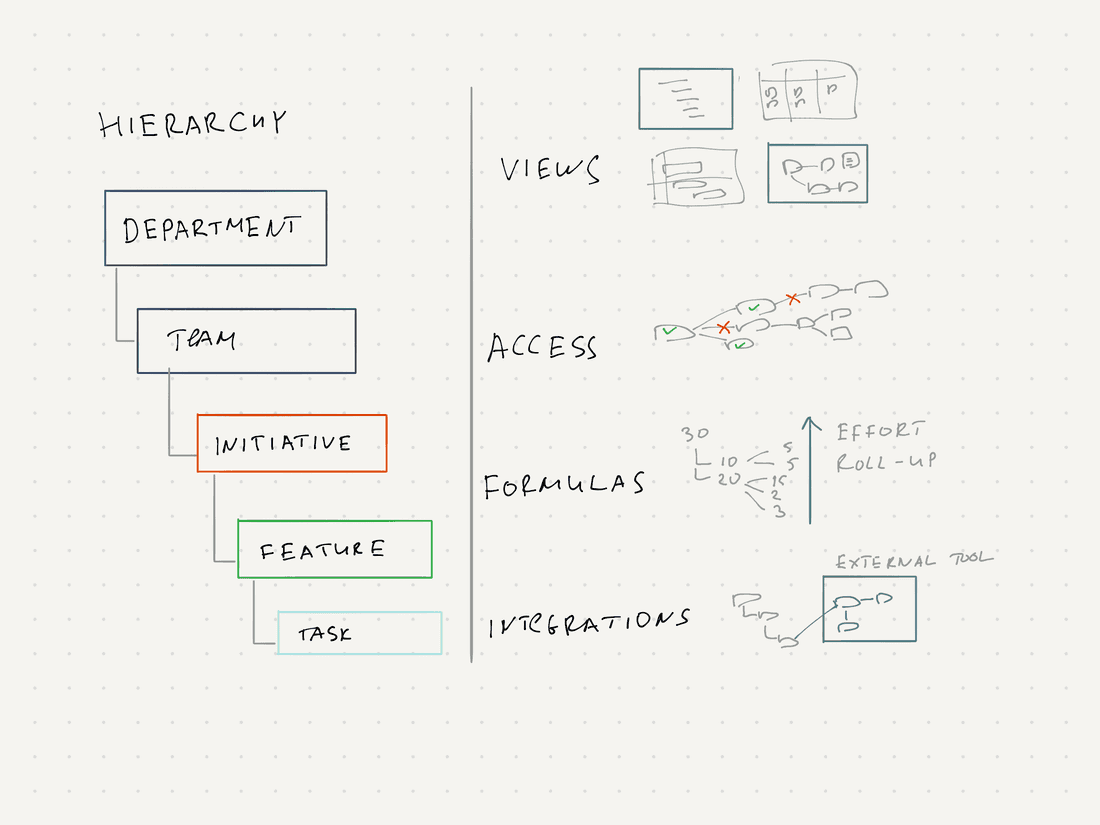
How many tools can do this? Let’s jump into a specific example and how it works with networks.
Fibery vs. world: what makes Fibery different?
Why does Fibery exist? How is it better than Notion, ClickUp, Airtable, Coda, Jira, Monday, ProductBoard or Miro?
This part may sound like an ad. And it is an ad, because Fibery is fucking awesome 😈.
The short answer is Fibery has exceptional support of Hierarchies and Networks, while other tools have only rudiments of that. Creating the hierarchy Department → Team → Initiative → Feature → Task is super easy, you just add several databases and link them via relations. It takes 5 minutes (or even faster with AI help).
Now we’ll dig into specific functionalities that should work with the hierarchy.
Navigation & Views
You want to visualize networks and hierarchies using all kind of Views. For example, you may want to see it in a Table View with all levels. In Fibery, you can create deep visualizations without restrictions.
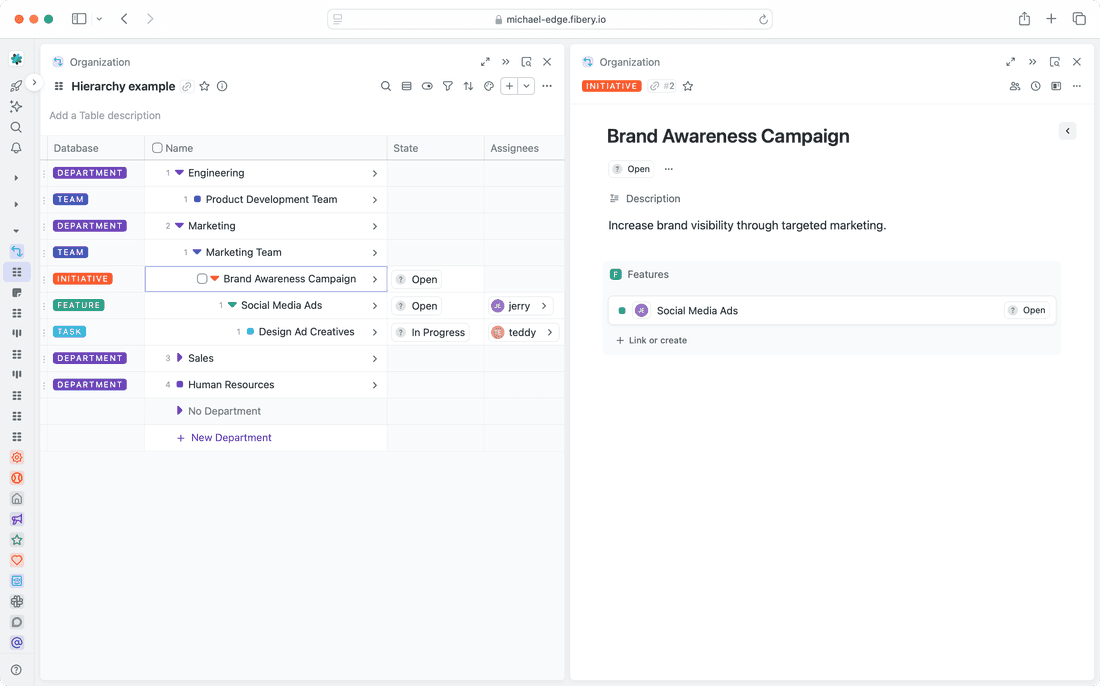
This is just a Table View, but all other kind of views are supported (Timeline, Board, List, Calendar). How many tools support this setup and visualization? All of them have Views, but these Views don’t work with deep hierarchies.
Maybe you want to represent your network and hierarchy on a Whiteboard and think about new tasks, problems and solutions. Mixing databases and free drawing tools is a powerful thing.
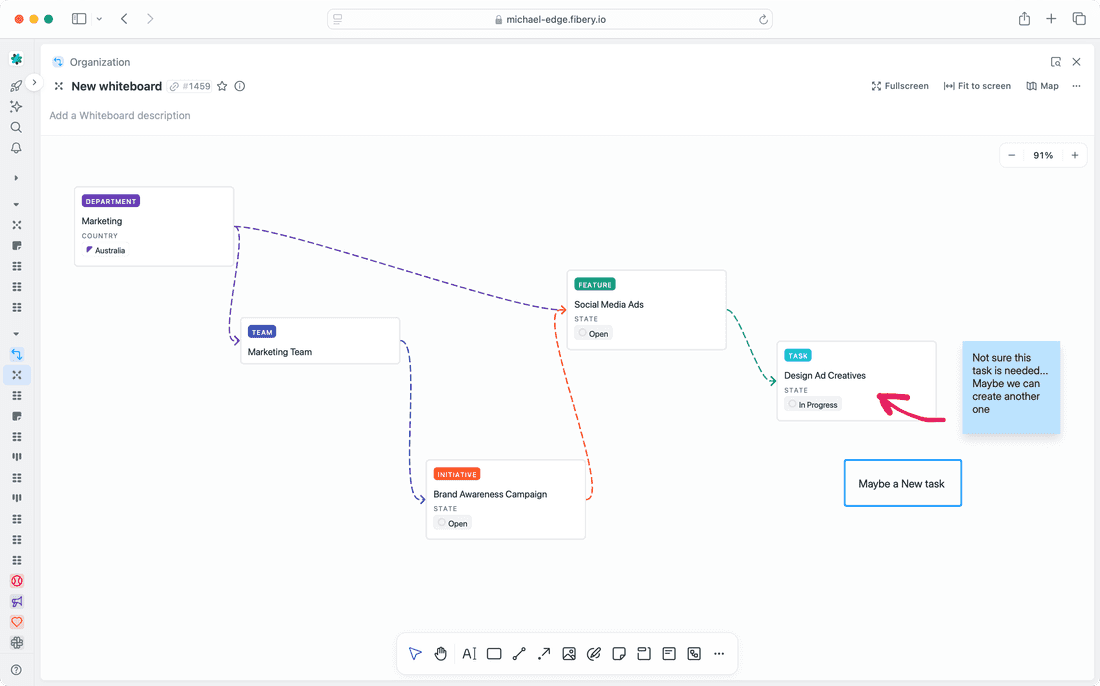
Navigation is also a very important part of the tool: you should be able to quickly navigate through the network back and forth, with single clicks, otherwise friction will be too high.
Permissions & access
It should be possible to set access to control parts of the network. For example, with Department → Team → Initiative → Feature → Task you should be able to give someone access to a Department and to all its nested entities (teams, features, etc). Or you may want to give access to a single Team and all things below. Or even to a single Task.
A permissions system of this flexibility is extremely hard to design and implement. Our team spent 3 years on it to get it right. And we did get it right.

Formulas and Automations
You want to perform calculations and automations across the connected network. For example, you may want to estimate each task’s effort and then calculate total effort on all levels, from Feature to Department. Fibery can handle it easily.
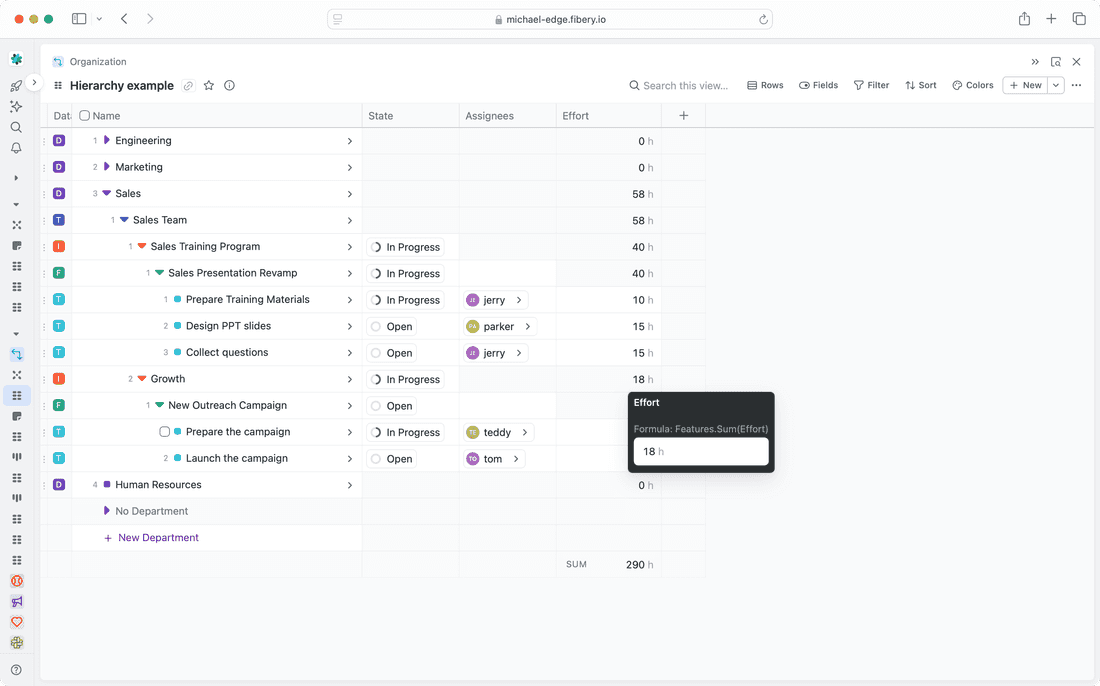
Integrations
Integrations to external systems create new data islands in Fibery that you can flexibly connect to other data, thus making external data a part of the network. Fibery replicates the domain of any external system and allows you to create custom relations. For example, you can add a World space and link Country to Department, or add Slack space and link Channel to Team.
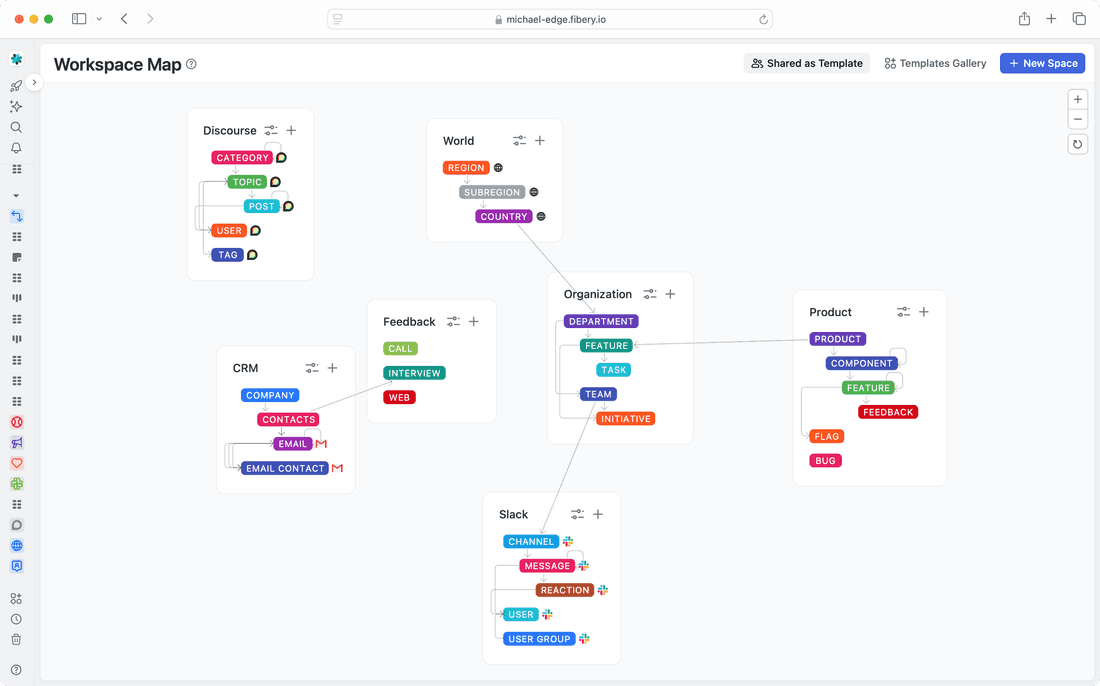
So why does Fibery exist?
As you see, networks and hierarchies are not just bare concepts in Fibery. They are deeply supported and developed. This use case was deliberately simplified - in real life everything is much more complex, and Fibery can handle it well. Fibery has the best support for information networks and hierarchies on the market.
If we quickly compare Fibery to other tools, here are the one-liners:
- 😈 Fibery is less chaotic than Notion.
- 🦚 Fibery is more connected than ClickUp.
- 🎸 Fibery is more powerful than Monday.
- 🤓 Fibery is better for knowledge than Airtable.
Why is that?
We designed Fibery from the first principles to support teams and organizations between 1-2000 people. As a result, we selected the best building blocks that you can compose to create simple and complex solutions. It’s very hard for your company to outgrow Fibery: it will grow with you and change with you. And Fibery can indeed replace many tools you use now and become an operational system of your company.
Fibery does cover all workflow starting points and merges them into a single all-in-one dream tool. You can start with a simple document, a simple whiteboard, or a list of tasks or ideas, mix and connect all information on the way and grow networks, then add stable hierarchical islands and keep complexity controlled.
A year ago Fibery was not ready for prime-time, but now it is. If you are not convinced, go see for yourself, and let Fibery become your company’s operating system.
Psst... Wanna try Fibery? 👀
Infinitely flexible product discovery & development platform.